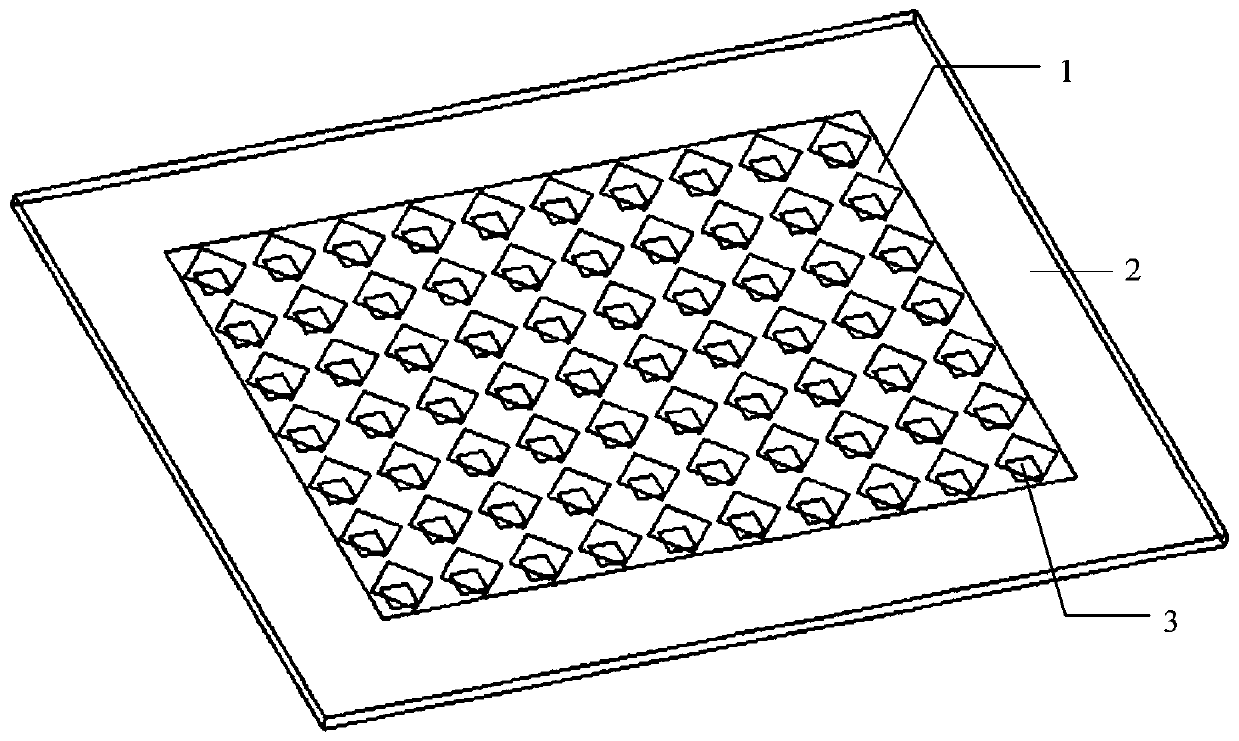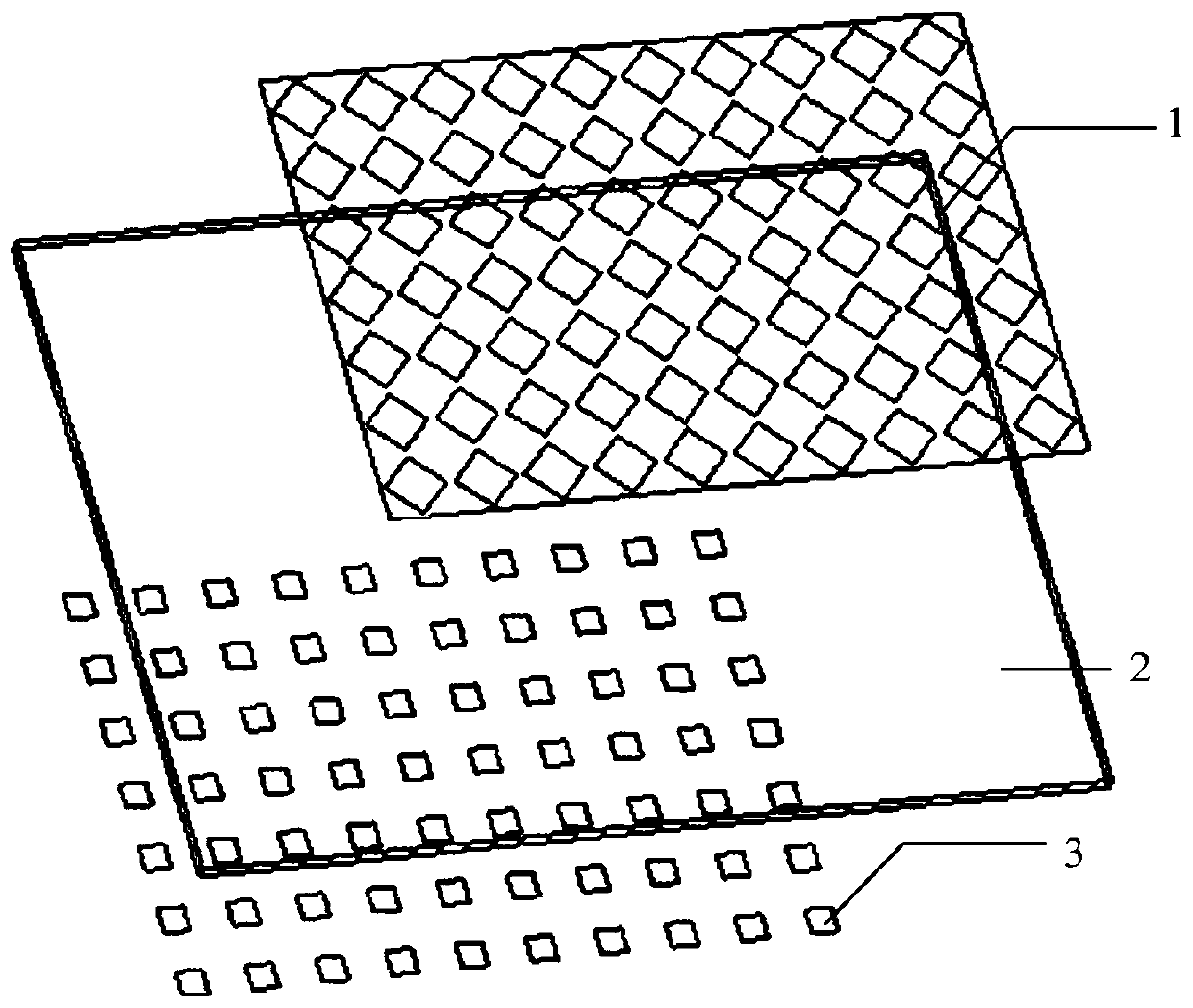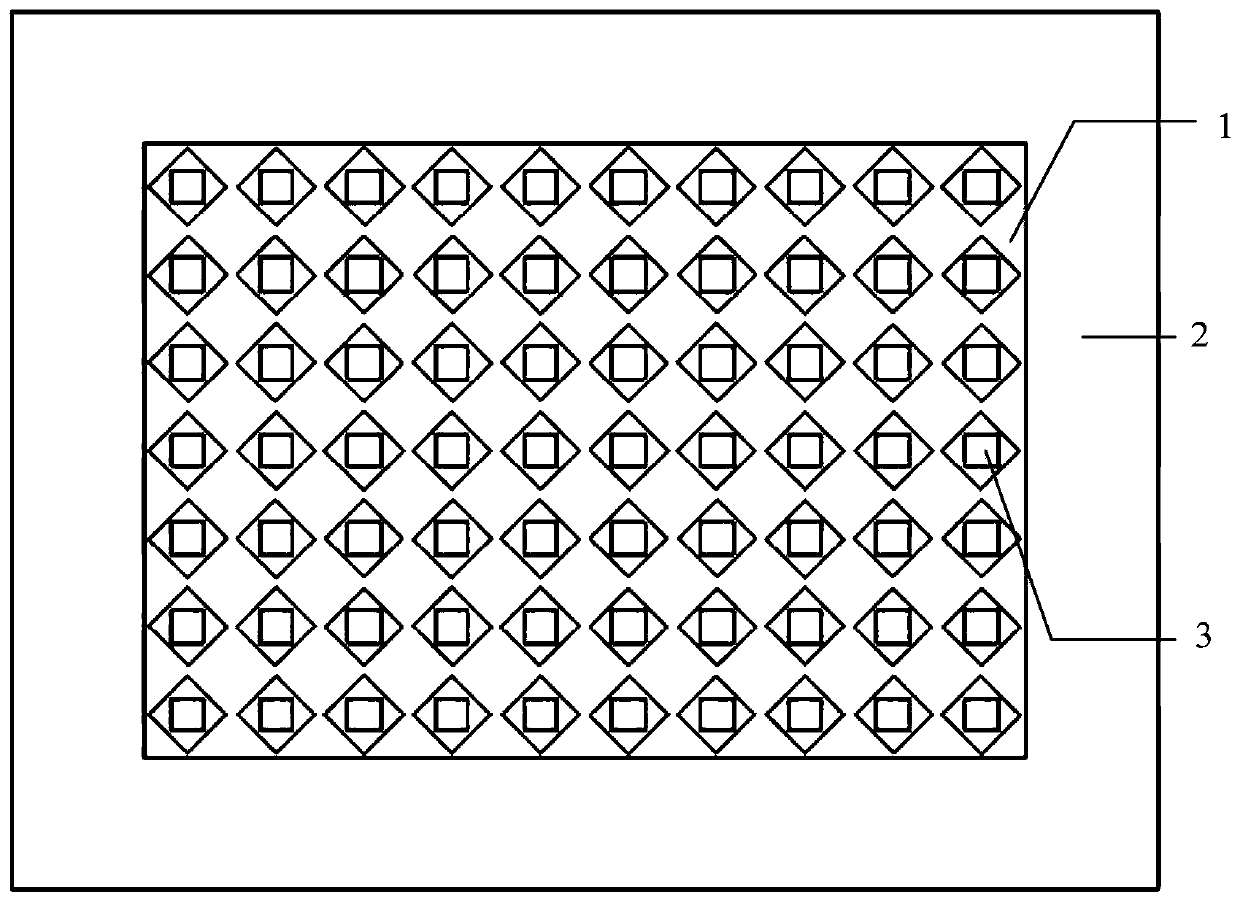Decoupling Fabry-Perot resonant cavity
A resonant cavity and reflector technology, applied in the field of FP resonator, can solve the problem of little effect on gain, and achieve the effect of increasing antenna gain, improving phase distribution, and reducing mutual coupling
- Summary
- Abstract
- Description
- Claims
- Application Information
AI Technical Summary
Problems solved by technology
Method used
Image
Examples
Embodiment Construction
[0030] decouple the FP resonator, including upper layers such as Figure 1-3 The partially reflective surface shown, and the underlying layer as Figure 4-6 For the reflectarray and 1x2 patch antenna array shown, the distance between the upper and lower layers is 3.2mm. The partially reflective surface includes an upper metal layer 1 , a lower metal layer 3 and a dielectric substrate 2 . Among them, the upper metal layer 1 is composed of 7x10 square metal units with a period of 8mm, and each unit has a diamond-shaped groove with a side length of 5mm; the lower metal layer 3 is also composed of 7x10 square units with a period of 8mm, each unit The center is a square patch with a side length of 6mm. The thickness of the dielectric substrate 2 is 1.524mm, and the overall size is 80x104mm 2 , choose Taconic TLY-5 with relative permittivity 2.2 and loss tangent 0.0009.
[0031] The reflect array and the 1x2 patch antenna array include the upper metal layer 4 of the reflect arra...
PUM
 Login to View More
Login to View More Abstract
Description
Claims
Application Information
 Login to View More
Login to View More - R&D
- Intellectual Property
- Life Sciences
- Materials
- Tech Scout
- Unparalleled Data Quality
- Higher Quality Content
- 60% Fewer Hallucinations
Browse by: Latest US Patents, China's latest patents, Technical Efficacy Thesaurus, Application Domain, Technology Topic, Popular Technical Reports.
© 2025 PatSnap. All rights reserved.Legal|Privacy policy|Modern Slavery Act Transparency Statement|Sitemap|About US| Contact US: help@patsnap.com



